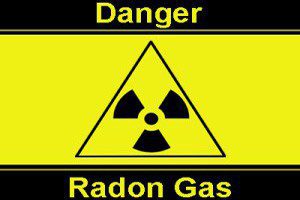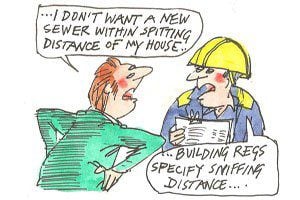
[lwptoc]
Radon Gas & Landlord’s responsibilities
The landlord does have a responsibility towards the level of Radon Gas that may be present in a building.
According to research, the potential risk of lung cancer increases by about 16% per 100 Bq/m3 when exposed to Radon over a long period.
Radon Gas Information for Landlords and Tenants
Landlords need to ensure that there are no hazards present, including the level that might exist on the land. Whilst boilers and electrical installation are maintained, Radon is often overlooked.
The Housing Health & Safety Rating System (HHSRS) evaluates potential risks and hazards to health and safety in a residential property.
The HHSRS covers a list of 29 various categories which also includes Radon.
If a building is in an Affected Area, then the construction and condition of the ground and the presence of open chimney flues and the means of ventilation should be assessed.
The condition of these may only show that there maybe be a problem. One needs to be cautious Radon levels can vary widely even between identical dwellings.
To find whether or not there is a threat to health is by testing.
The risk assessment requirements under HHSRS, landlords with properties located in affected areas, should carry out a radon test.
If, after the radon test, the levels are more than the domestic Action Level of 200 Bq/m3. The landlord should arrange for remedial works to be carried out as soon as practical.
The Ionising Radiations Regulations 2017
The Ionising Radiations Regulations 2017 (IRR17) comes into play where the Radon Gas is above the defined level of 300 Bq/m3.
Landlords must take action to restrict resulting exposures to tenants.
Where a landlord suspects their property is at risk, you should use a Public Health England interactive radon map for the UK.
This map uses darker colours to show which areas are most likely affected by radon gas.
If you have properties that you manage that are at risk, you will need to make sure they are tested. In a domestic test, the living area and bedroom are measured for three months.
The test results are used to calculate the estimated annual average radon level.
This level can then be compared to the domestic Action Level (200 Bq m-3) & Target Level (100 Bq m-3).
Landlords should ensure they do not breach the Homes (fitness for human habitation) Act 2018 to reduce the risk of being sued by the tenant.
Under the act, you are responsible for supplying adequate ventilation and freedom from damp.
It is essential landlords ensure they invest in a ventilation solution for their properties.
Positive Input Ventilation (PIV) systems create a fresh living environment by supplying fresh, filtered air into a property at a continuous rate.
Positive ventilation draws fresh air into a building and dilutes the Radon. The flow of air and Radon from the ground can potentially be reduced.
A positive ventilation system can be a good solution in homes with radon levels around 500 Bq m-3.
Radon is emitted from the ground, and high concentrations of odourless and colourless gas have been linked with causing lung cancer, although its actual health impact is disputed.
Radon Statistics
A survey conducted by the British Landlords Association in February 2021 revealed 63% of landlords confessed they knew Radon was a gas substance. Still, they had no idea of its dangers and implications.
UK Radon Association
UK Radon Association helps improve understanding of Radon Gas and reduce the risk of exposure in UK homes & workplaces by awareness of the dangers in buildings. radonassociation.co.uk
FAQ
Are Landlords Responsible for Radon Gas?
Landlords have responsibilities like; gas and fire safety, ensuring heat, hot water is available and responding to any disrepairs surrounding these obligations.
However, radon gas is still a mystery to most landlords, but it doesn’t make Radon gas any less dangerous.
Radon gas is a naturally occurring radioactive gas, which can enter a building from the ground, exposing tenants to doses of radiation.
The radioactive elements formed by the decay of Radon can be inhaled and enter the lungs.
Inside the lungs, these elements continue to decay and emit radiation, most importantly, alpha particles.
These are absorbed by the nearby lung tissues and cause damage. This damage can then potentially lead to lung cancer.
Radon, therefore, is incredibly dangerous and should be treated in much the way we approach carbon monoxide gas.
Radon is odourless, tasteless, invisible, and the only way to detect it is through radon testing equipment.
Each year, there are 1,100 preventable deaths in the UK linked to Radon, so we must test for it.
What is Radon Gas?
It is a radioactive gas that generally emanates from uranium.
It can be found in rocks and soil and is usually an issue when buying properties in Cornwall, Devon, Wiltshire, Somerset, Avon, Shropshire, North West, East Midlands, and Wales.
Generally, the concern is that radon gas can collect, and if not vented out of a property, a build-up can cause health problems.
Other Radon Gas is a by-product of the decay of uranium and thorium and may be found in buildings where they have been used or stored.
Commercial Landlords should check as part of a property’s risk assessment that Radon Gas is not present or over the acceptable level.
If developers build a new building or alterations in a Radon affected area, then under building regulations, there might be a requirement for testing for Radon.
Radon Testing for Landlords
If you wish to test for radon gas on a property, an application can be made to Public Health England.
They can supply a test kit for which they charge a fee that includes the cost of analysing the results after three months of testing for Radon.
Where properties are determined to be above action levels, then work to improve ventilation should be undertaken.
The British Landlords Association is a free national landlords association; why not join us today?
Date: 10th of March 2021
Author: Sarah Featherstone sarah@thebla.co.uk
Top Blogs:
Is our housing market about to crash?
Oldham landlord jailed 9 years after a tenant dies of carbon monoxide poisoning
Free Landlord Advice Line for Members Directly to Lawyers Members only 01293 855700
Disclaimer:
This post is for general use only and is not intended to offer legal, tax, or investment advice; it may be out of date, incorrect, or maybe a guest post. You are required to seek legal advice from a solicitor before acting on anything written hereinabove.




